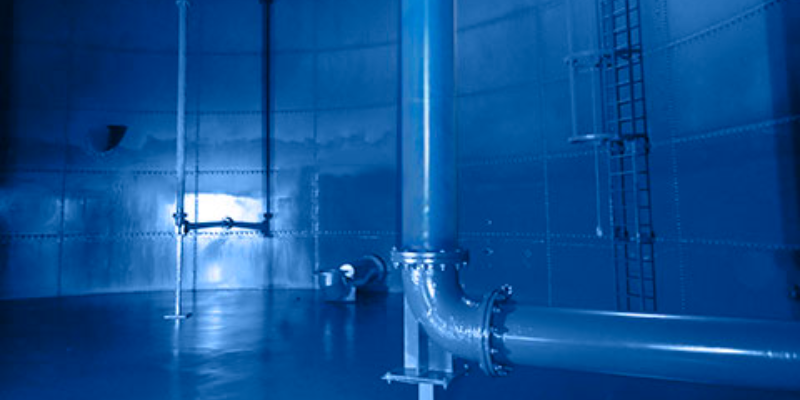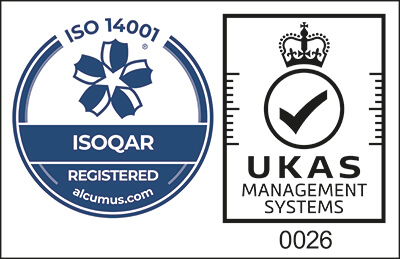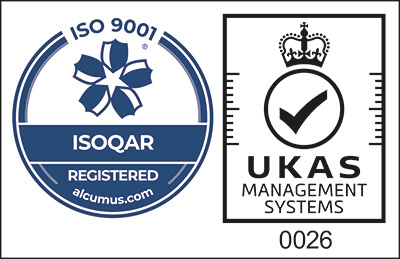
Cold water storage tank cleaning is essential for preserving the quality of your water, whether potable or otherwise. Removing bacteria and ensuring regular maintenance can prevent various health issues that dirty water can cause.
Dirt, mould, sediment and harmful bacteria can all develop without your knowledge. Which is why it is important to understand the proper water tank cleaning and disinfection processes to follow.
In this article we cover contaminants and the recommended methods to clean your cold water storage tank.
Why is Cold Water Tank Cleaning Necessary?
The main reason cold water storage tank cleaning and disinfection is necessary is the various contaminants growing in stagnant water. The first of these being bacteria and pathogens.
- Bacteria and Viruses
If your cold water tank is infected with bacteria or viruses, you could become ill with a stomach bug or even more serious illnesses. Normally, severe effects only occur if your water has been stagnant for a long period of time. Or if you leave your tank unmaintained.
- Legionella
Legionella contamination causes thousands of cases of Legionnaires Disease each year. This illness is plagued with symptoms such as high temperature, muscle pains, and occasionally pneumonia.
Legionella thrives on rust, algae, sludge and other organic matter in stagnant water. Unfortunately, dirty cold water storage tanks provide the perfect environment for the bacteria to grow.
Inhaling small droplets of contaminated water causes Legionnaires Disease but it can also be developed by consumption of contaminated water.
The most effective method of avoiding Legionella growth is regular, thorough cold water storage tank cleaning. Another way is to ensure the temperature of your water is maintained. Legionella thrives in temperatures of 20-50°C.
- Biofilms
Biofilm formation occurs as a reaction to UV radiation, limited nutrients, pressure and salt concentrations. Biofilms form in water tanks, contaminating the water and harbouring pathogens. Cold water storage tank cleaning is essential to deter the formation of biofilms in your tank.
- Sediment
Sediment formation is a natural process that unfortunately can’t be completely deterred by storage tank cleaning. It occurs when metals present in your tank begin to dissolve and rest at the bottom of the tank. Sediment isn’t known to cause serious illness in humans.
It can, however, generate an unpleasant taste and odours in your tank. Despite not being a health hazard to humans, sediment should not be ignored. It can breed a host of issues in your water tank that can lead to malfunction or even total breakage.

How does cold water storage tank cleaning work?
To clean your water storage tank you must first empty it. Once the tank has been drained you need to scrub the internal surfaces with hot water and detergent. The external hoses, pumps and pipes should also be washed thoroughly. Before filling the tank back up, every surface should be washed with hot water until there are no traces of detergent left.
At a minimum we recommend cleaning your tank at least once every six months. Doing this will kill the bacteria and pathogens that may be present in your water and prevent them from growing. Additionally, you should hire a trained professional to complete any work occurring inside the tank, as the confined spaces can pose a health risk.
How do I disinfect a cold water storage tank?
For disinfecting your tank we recommend using a ratio of 50mg/L of household chlorine bleach. As the tank is filled the bleach should gradually be poured into the water while being stirred thoroughly to ensure it covers all surfaces of the tank. The tank should be filled with water and mixed with bleach until it is at the normal operating level and left for at least 12 hours to allow the bleach time to penetrate any remaining dirt that may still be present on the surface of the tank.
The tank should be drained and filled as many times as necessary to rid the bleach smell from every component of the tank. Once the smell is gone, the cold water storage tank cleaning is complete.

How to Prevent Issues with Your Storage Tank?
By ensuring your tank is thoroughly cleaned bi-yearly and keeping up with maintenance you can prevent further issues with your water tank. There are, however, other methods that are effective in slowing the rate of sediment build-up in your tank.
Water tank lining is one of the best ways to keep issues with your water tank at bay. In addition to preventing bacteria from spreading in your tank it reduces the sediment build up, meaning you don’t have to clean your tank as often.
Poor condition water tank lining, however, can lead to problems with the quality of the water in your tank. It’s important to keep your tank lining in good condition for it to be effective.
How can COVAC Help You With Cold Water Tank Maintenance?
At COVAC, we specialise in water tank lining and are proud to offer exceptional tank lining services that provide our clients with long-term solutions. We ensure that your tank not only meets but is exceeding the current water regulations and standards. In addition it protects your tank from erosion, corrosion and leaking.
All our services come with a 10-year guarantee, so you can be sure that you will receive the best possible cold water storage tank lining from a trained, experienced and fully certified team. We will ensure that your tank adheres to the HSG274 and ACoP L8 guidelines to help protect you and those around you from the danger of Legionella and other illnesses.
For more information about our services, why not contact us today?










